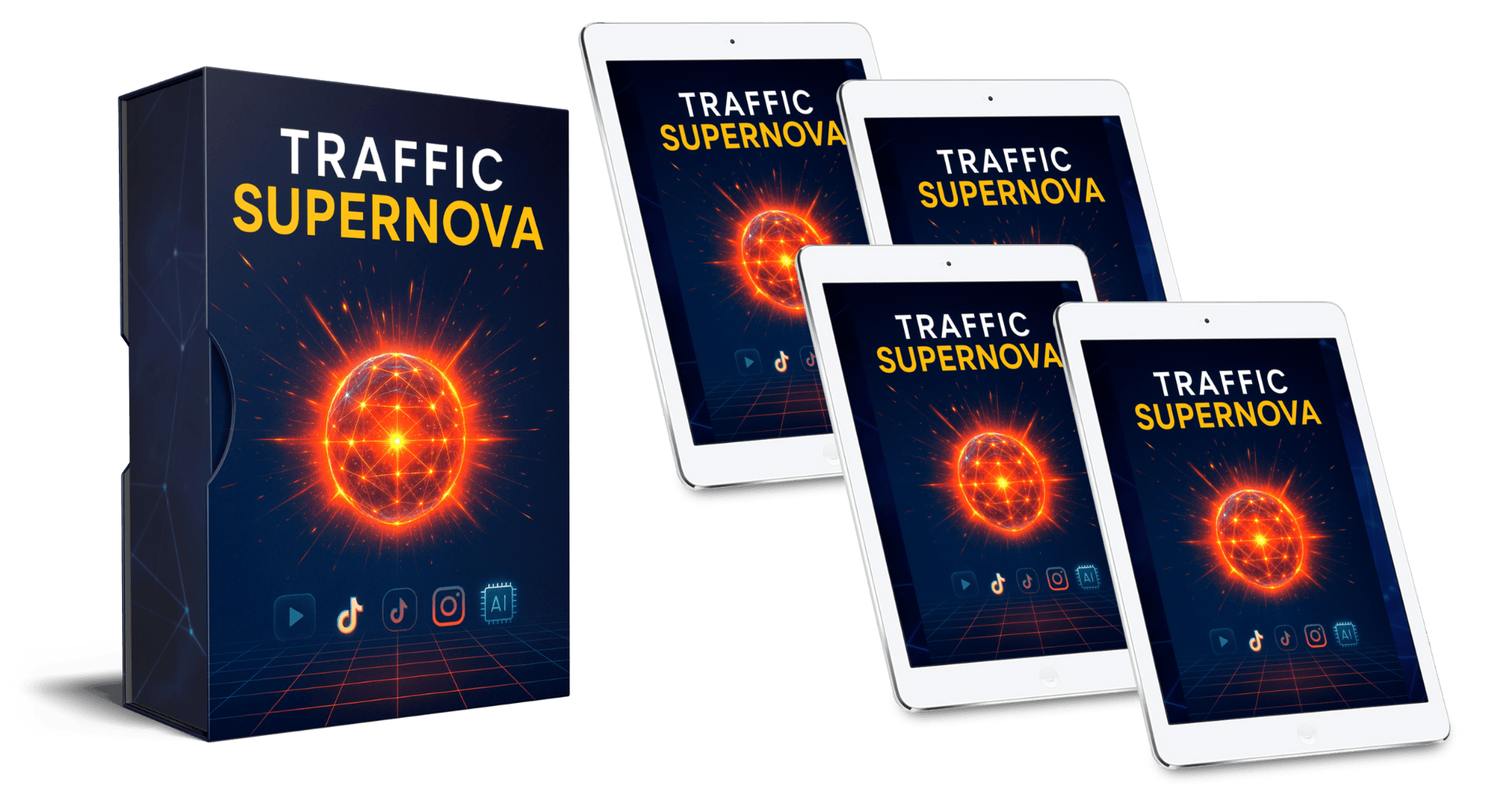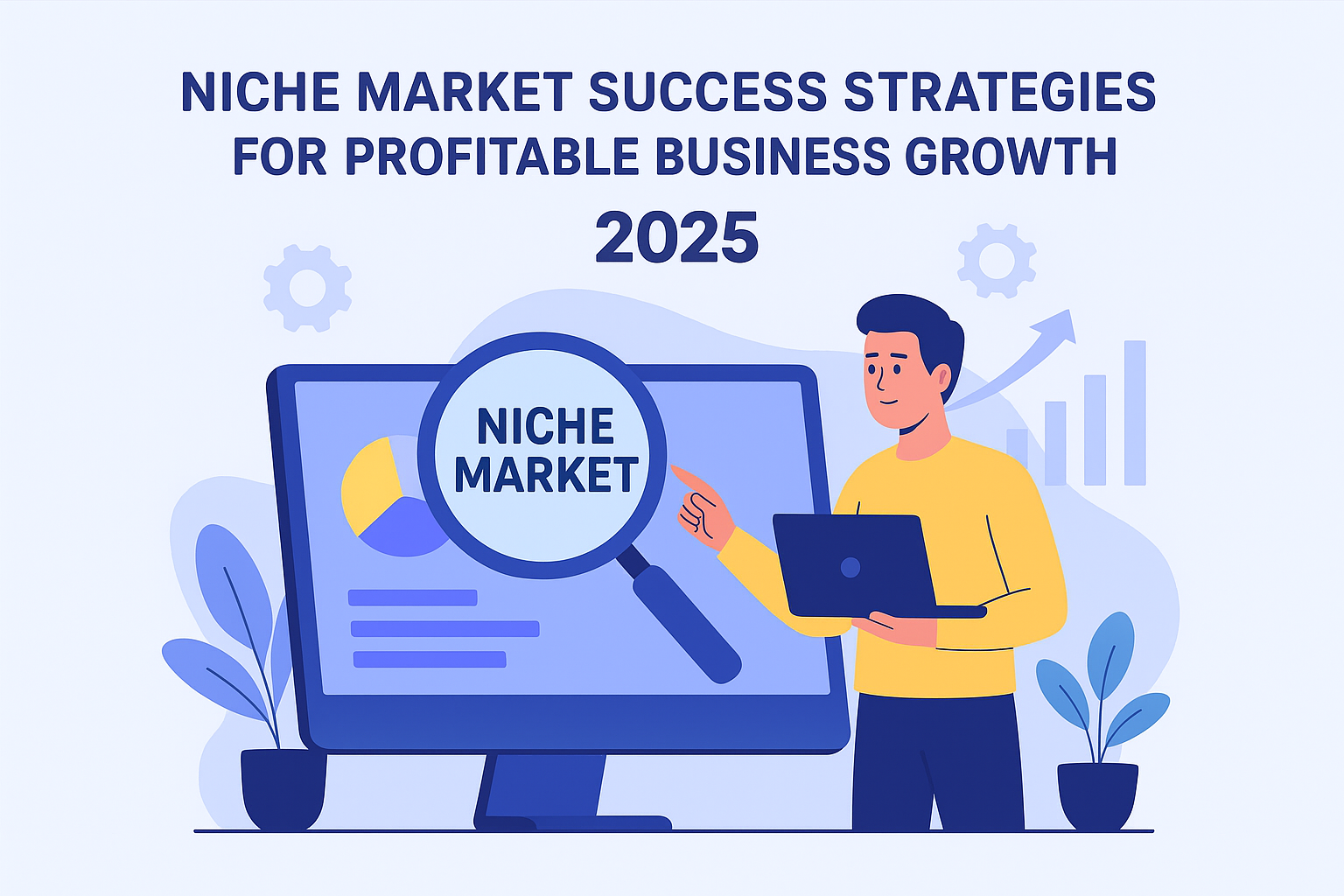If you’ve been dreaming about starting a faceless YouTube, TikTok, or Instagram channel — but editing, recording, and complicated tech scare you off — Traffic Supernova Review promises to make everything “hands-off.”
This review breaks down what Traffic Supernova actually does, how beginners can use it, its real strengths and weaknesses, and whether it’s worth your money.
By the end, you’ll know exactly if it’s the right fit for you — and how to get started fast.
What Is Traffic Supernova?
Traffic Supernova is a fully automated, beginner-friendly system that builds short-form videos for you and posts them across multiple platforms — all without you filming, editing, or writing scripts.
Once you set it up, the software handles:
- Content research
- Script writing
- Video creation
- Captions
- Thumbnails
- Description optimization
- Uploading and scheduling
It’s like having a personal content team running 24/7… without the cost, headaches, or learning curve.
Instead of figuring out editing tools, researching trends, or manually uploading videos, the system does everything from start to finish.
If you’ve wanted to get into faceless YouTube automation — but didn’t know where to begin — this tool removes every major barrier.
Why Traffic Supernova Matters in 2025
Short-form video content is exploding, and the platforms pushing it — YouTube, TikTok, Instagram Reels — are hungry for volume.
Creators who post consistently get rewarded with:
- More reach
- Faster viral spikes
- Higher ad revenue
- More affiliate clicks
- More niche authority
But here’s the issue:
Most beginners don’t have the time or skills to produce 20–60 short-form videos a week.
Traffic Supernova solves that by making volume easy.
Instead of spending hours editing or outsourcing expensive content (often $30–$50 per short), the software lets you scale output without lifting a finger.
2025 is shaping up to be the biggest year yet for faceless video channels.
Traffic Supernova gives beginners the ability to compete at the same level as high-output automation teams.
How to Get Started With Traffic Supernova (Beginner-Friendly Blueprint)
Step 1 — Avoid the Advanced Menu at First
Many excited users jump straight into the deeper settings because they think it’ll give them more control.
But if you’re a beginner, this just slows you down.
The fastest path to success is keeping your workflow simple.
Step 2 — Use the “Easy Start Module”
This module contains done-for-you templates, presets, and automation settings that require no editing or tweaking.
You pick your niche → press activate → the automation begins.
Even complete newcomers can launch their first channel within minutes.
Step 3 — Connect Your Social Accounts
Traffic Supernova connects directly with the platforms you plan to publish on:
- YouTube
- TikTok
- Even multiple channels in the same network
This is where things get fun: once the accounts are linked, the posting engine kicks in automatically.
Step 4 — Turn On Full Automation
This activates:
- AI script creation
- Automated short-form video generation
- Thumbnail creation
- Caption writing
- Posting & scheduling
- Daily content output
From this point forward, your channels run without manual effort.
Step 5 — Scale Into Multiple Niches
Traffic Supernova shines when you launch 2, 3, or even 5 channels at once.
Why?
Because you:
- Multiply your chances to go viral
- Diversify your income
- Dominate multiple niches simultaneously
What used to take entire teams can now be done by one beginner with one tool.
5 Reasons Traffic Supernova Works for Beginners
1. 100% Hands-Free Automation
This is the core value: once you set it up, you don’t create content — the software does everything for you.
Many automation tools help with parts of the process.
Traffic Supernova handles the entire pipeline, including:
- Finding topics
- Writing the scripts
- Building the videos
- Uploading them
- Choosing optimal posting times
For beginners or busy people, this is a dream setup.
2. Traffic Supernova Build Multiple Faceless Channels Fast
Most tools let you run one channel.
Traffic Supernova lets you build multiple faceless brands at the same time.
This multiplies your:
- Traffic
- Affiliate clicks
- Viral potential
- Overall income
Instead of working harder, you scale smarter.
3. No Tech Skills Required to use Traffic Supernova
Let’s be honest:
Most beginners struggle with editing, equipment, and confusing software.
Traffic Supernova removes every technical barrier:
- No recording
- No editing
- No learning curve
- No team required
- No outsourcing headaches
If you’ve failed at YouTube automation before, this tool gives you a fresh start — the easy way.
4. Powered by Shane Nathan’s Internal Automation Hacks
This is one of the biggest reasons Traffic Supernova stands out.
Shane Nathan (GM at WarriorPlus) has access to platform insights and automation tricks most creators never see.
Traffic Supernova bakes these optimizations into the system.
These hidden tweaks boost:
- Posting speed
- Reach
- Discovery by the algorithm
- Video volume
- Viral probability
These are real competitive advantages — not gimmicks.
5. Low Cost With Shockingly High Upside
Compare the alternatives:
Hiring an editor: $30–$50 per video
YouTube automation coaching: $3,000–$10,000
Buying scripts: $10–$25 each
Paying a content team: $2,000–$8,000 monthly
Traffic Supernova gives you:
- Unlimited video creation
- Unlimited channels
- Full automation
- A content system you own
…for the price of a pizza.
You simply cannot beat the ROI.
Pros & Cons (Honest, Unbiased Breakdown)
Pros
- Extremely beginner-friendly
- Fully automated content engine
- No equipment or skills required
- Launch multiple channels instantly
- Uses proven viral optimization methods
- Works fast — sometimes in hours
- No recurring subscriptions for the main product
Cons
- Not ideal for creators who want to be “on camera”
- Some advanced features can overwhelm newcomers
- Works best if you stick to the built-in templates
- Short-form only (not long-form YouTube)
If your goal is simple, fast faceless growth, these aren’t dealbreakers.
FAQs About Traffic Supernova
Is Traffic Supernova really beginner-friendly?
Yes — especially if you stick to the Easy Start Module.
Do you need editing experience?
No. The software does all editing and video creation for you.
Can you run multiple channels?
Yes. This is one of its biggest advantages.
Does it work for long YouTube videos?
No — it focuses exclusively on short-form automation.
Is Traffic Supernova worth the money?
If you want a no-tech way to build faceless channels, absolutely.
Final Thoughts — Should You Buy Traffic Supernova?
If you’re looking for the easiest, fastest, most beginner-friendly way to build faceless YouTube, TikTok, or Instagram channels in 2025, Traffic Supernova is one of the best tools you’ll find.
It removes:
- The editing
- The filming
- The script writing
- The time commitment
- The learning curve
- The tech headaches
And replaces them with:
- Simple setup
- Automated posting
- Unlimited content generation
- Multi-channel scaling
- Real potential for passive income
It’s affordable, powerful, and perfect for beginners who want results without the traditional grind.
Relevant Websites
If you want to explore more ways to grow faceless YouTube or TikTok channels, you’ll find Tube Filter’s industry insights especially helpful for keeping up with creator trends Tube Filter. And for anyone wanting deeper YouTube SEO strategies, the tutorials over at Think Media’s official site offer beginner-friendly guidance and gear recommendations Think Media.
Get Traffic Supernova Today!
If you’re ready to launch faceless channels the easy way — and you want the biggest advantage right from day one — I highly recommend grabbing Traffic Supernova through my link.
You’ll get the full automation system, plus my personal guidance and bonus tools to help you grow even faster.
👉 Click my link and get Traffic Supernova now — before the price increases.
It’s the simplest, smartest investment you can make if you want to grow on YouTube, TikTok, or Instagram without ever touching complicated tech again.
















